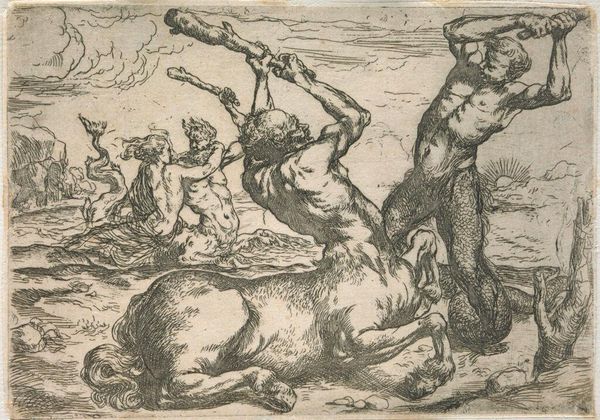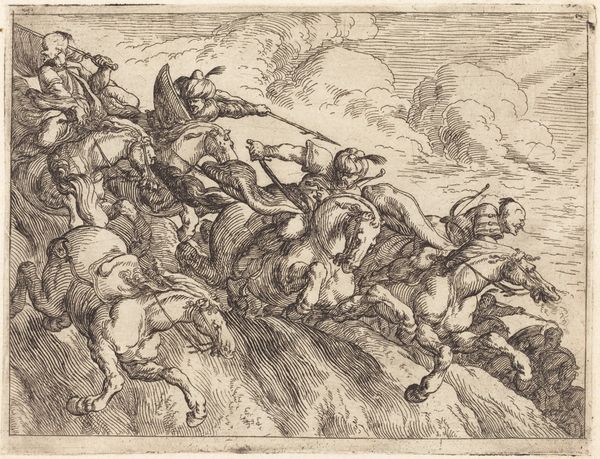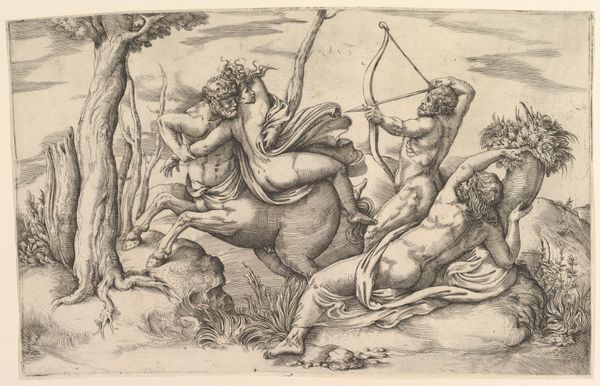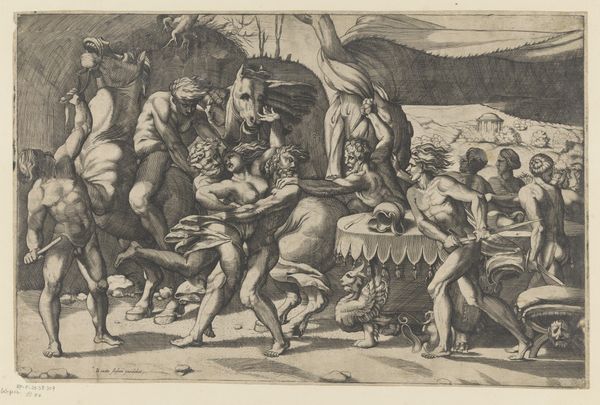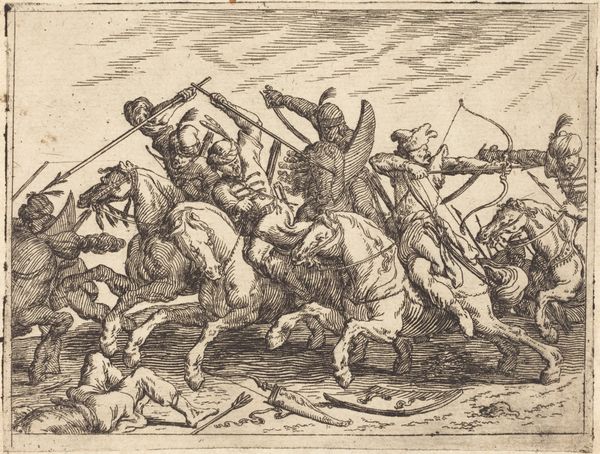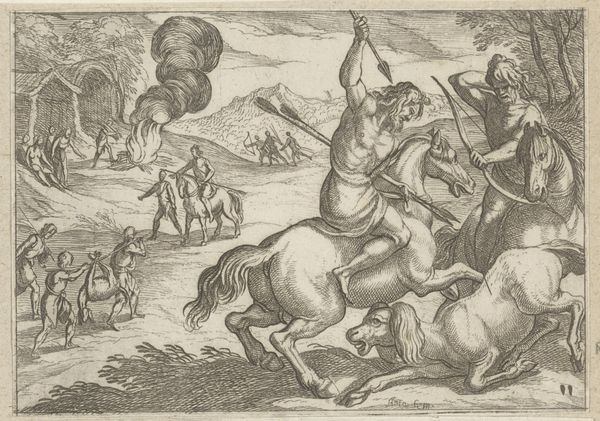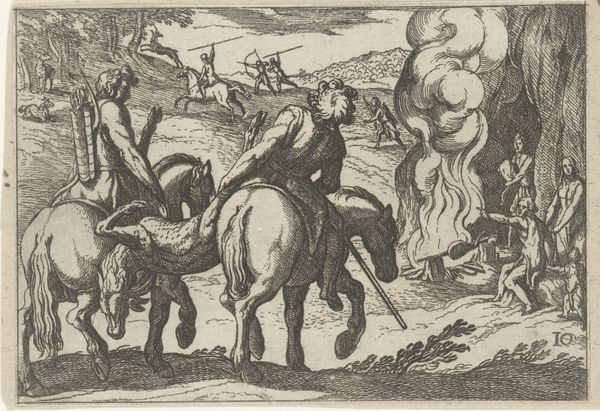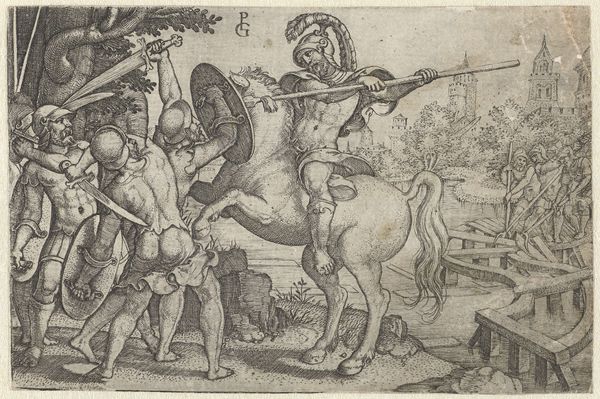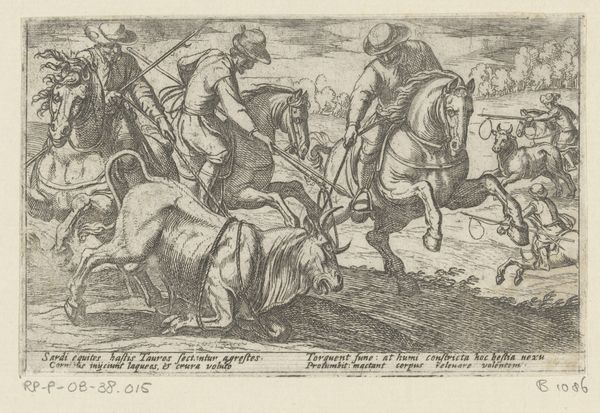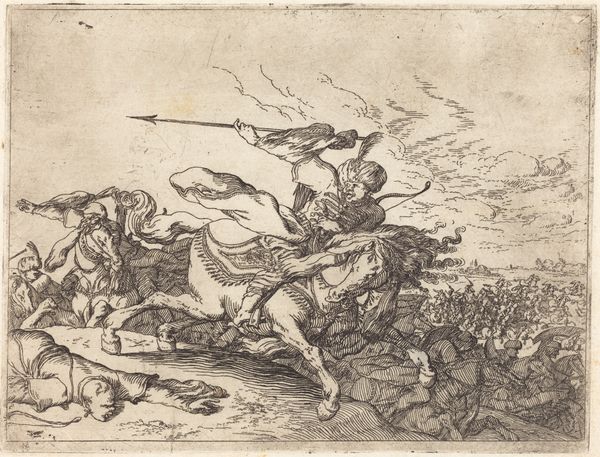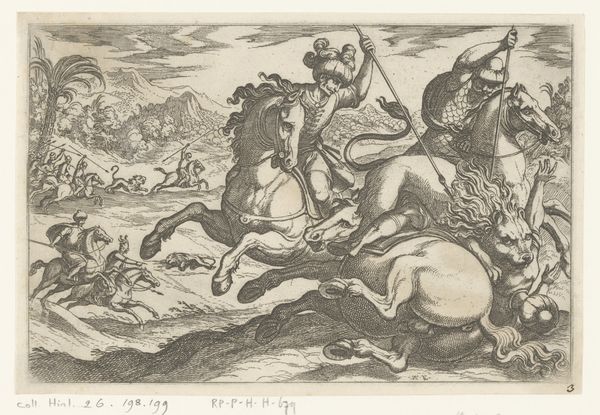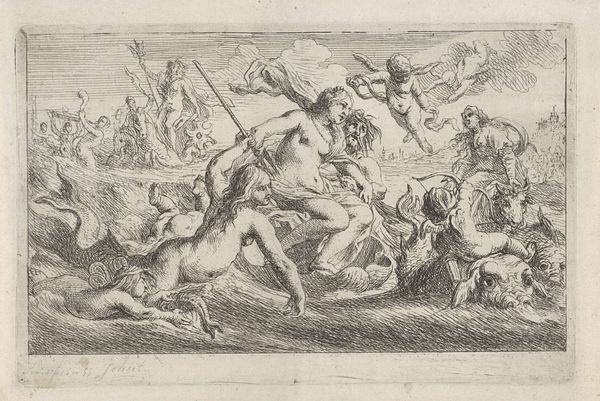
Battle Between a Centaur and a Triton with a Triton 1615 - 1625
0:00
0:00
drawing, print, etching, intaglio, ink, engraving
#
drawing
#
ink drawing
#
narrative-art
# print
#
etching
#
intaglio
#
figuration
#
ink
#
history-painting
#
engraving
Dimensions: Sheet: 4 5/8 × 6 9/16 in. (11.7 × 16.7 cm)
Copyright: Public Domain
Curator: Let’s consider this engraving, “Battle Between a Centaur and a Triton with a Triton” created between 1615 and 1625 by Jusepe de Ribera. The artist renders this violent mythological encounter through etching and engraving in ink. Editor: Whew, okay, first impressions? It’s chaos! Muscular bodies flailing, a raw struggle... like witnessing a primal scream frozen in ink. The figures dominate, leaving a barren landscape around their conflict. It evokes this very unsettling visceral reaction in me. Curator: Absolutely. It’s worth noting that Ribera was working in Naples, a Spanish territory at the time. His depictions of mythological scenes often carry social undertones. These violent struggles, these hybrid creatures, can be interpreted as metaphors for the tensions and power dynamics within that complex socio-political environment. Centaurs were often understood as barbaric beings in mythology, embodying primal instincts. How do we then relate that to this power struggle? Editor: Oh, for sure! Especially since they’re literally clubbing each other! But also, I feel a strange sympathy for them. Ribera’s use of stark contrasts highlights their bulging muscles, their strained expressions. It's kind of magnificent and horrible at the same time, like a car crash. You can’t help but stare, you know? Maybe this violence is a reflection of inner turmoil projected outward? A lament, or perhaps just, dare I say, a sort of grotesque ballet. Curator: That's a striking perspective. Consider, also, the backdrop, the landscape devoid of abundance or even peace, and the presence of a triton family in the distance as if spectating—perhaps we can assume they represent a certain apathy among spectators to such historical, primal struggles? The bodies become representative not of the self but perhaps the whole, a representation of societal structures. Editor: Mmhmm, well, either way, I think it holds a dark mirror up to our own messy human condition! I’m thinking the violence is the language we choose. This struggle between worlds leaves one pondering long after you've moved on, no? Curator: It does, precisely. This is why Ribera's work is so vital: it invites us to examine not only the mythology of the past but also the realities of power and conflict in our own time. Editor: Right, you’ve given me much to mull over; time to grab a coffee to think about these struggles now, no?
Comments
No comments
Be the first to comment and join the conversation on the ultimate creative platform.
